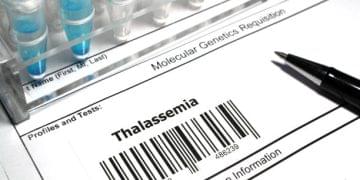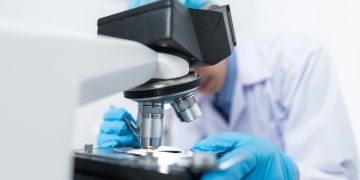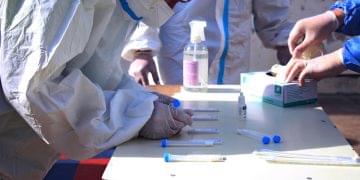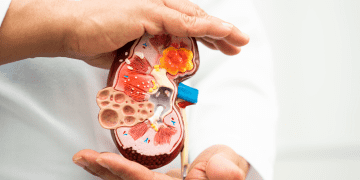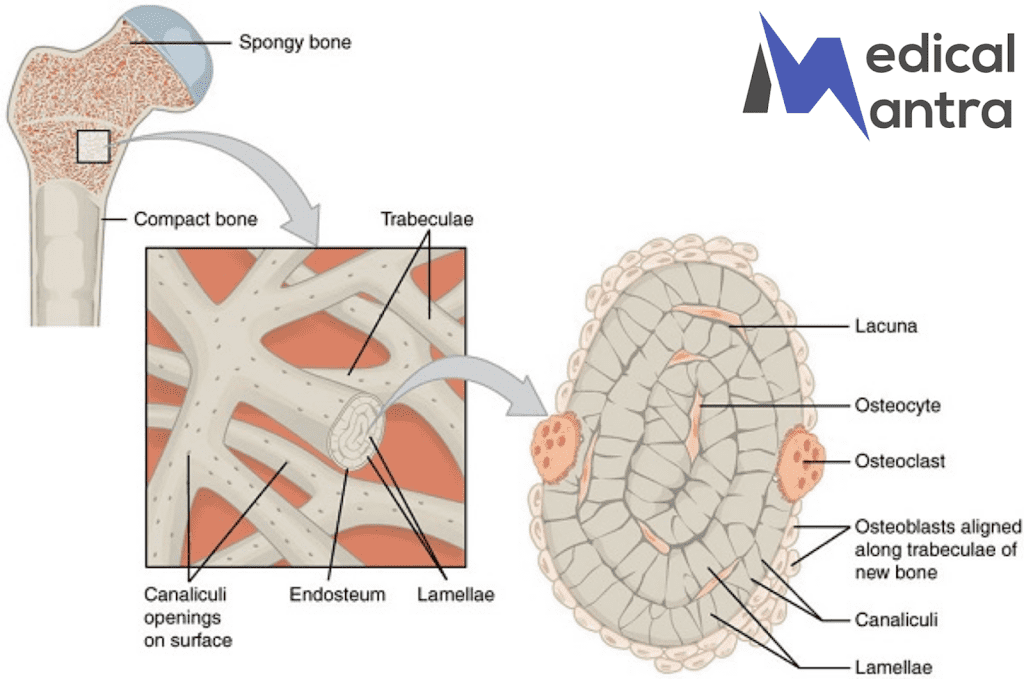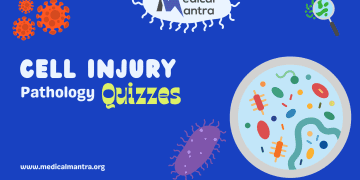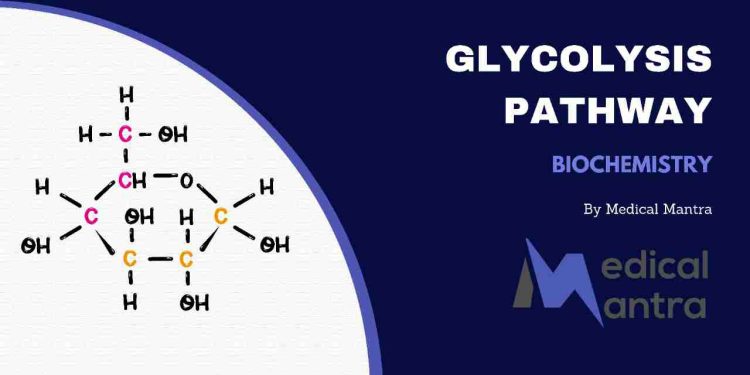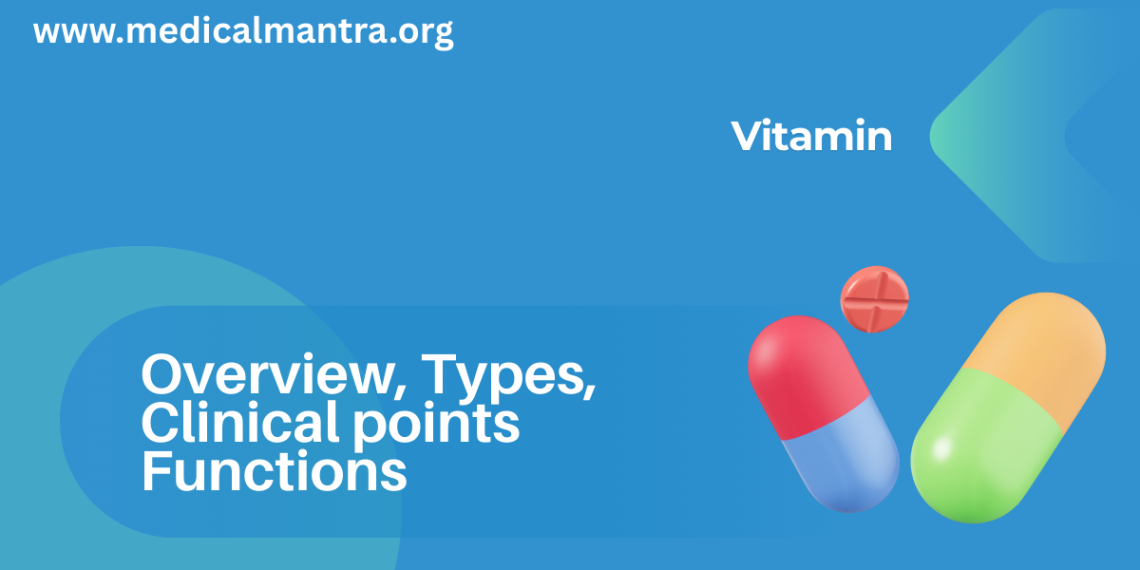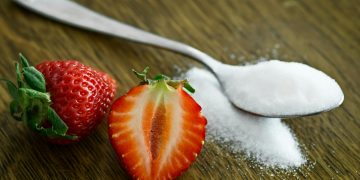Glycolysis is a fundamental biochemical pathway in the cytoplasm of cells and represents the initial stage of aerobic and anaerobic respiration. It’s a universal metabolic pathway found in nearly all living organisms, from bacteria to humans. Glycolysis involves the breakdown of glucose (a six-carbon sugar) into two molecules of pyruvate (a three-carbon compound), along with the production of ATP and NADH.
Table of Contents
Glycolysis pathway
- Glucose Phosphorylation: Glucose, a six-carbon sugar, enters the cell through facilitated diffusion or active transport. Once inside the cell, it is phosphorylated by the enzyme hexokinase (or glucokinase in the liver) using one molecule of ATP. This phosphorylation reaction adds a phosphate group to glucose, converting it into glucose-6-phosphate. This step traps glucose inside the cell and prepares it for further metabolism.
- Isomerization: Glucose-6-phosphate is then converted into its isomer, fructose-6-phosphate, by the enzyme phosphoglucose isomerase. This reaction is a reversible isomerization that rearranges the structure of the sugar molecule without changing its chemical formula.
- Phosphorylation of Fructose-6-Phosphate: Fructose-6-phosphate is phosphorylated at its carbon-1 position by the enzyme phosphofructokinase-1 (PFK-1), using another molecule of ATP. This phosphorylation reaction converts fructose-6-phosphate into fructose-1,6-bisphosphate. This step is a key regulatory point in glycolysis and is allosterically regulated by various factors, including ATP and citrate levels.
- Cleavage into Triose Phosphates: Fructose-1,6-bisphosphate is then cleaved into two three-carbon molecules: dihydroxyacetone phosphate (DHAP) and glyceraldehyde-3-phosphate (G3P) by the enzyme aldolase. These two molecules are isomers of each other but can readily interconvert through the action of the enzyme triose phosphate isomerase.
- Isomerization of DHAP: Triose phosphate isomerase catalyzes the reversible isomerization of DHAP into another molecule of G3P. This step ensures that both DHAP and G3P can proceed through the subsequent steps of glycolysis, as they are both converted into the same metabolite, G3P
- Energy Generation and Redox Reactions (Oxidation of G3P): G3P undergoes oxidation by the enzyme glyceraldehyde-3-phosphate dehydrogenase (GAPDH), resulting in the reduction of NAD+ to NADH. In this reaction, a phosphate group is also transferred from G3P to ADP, forming 1,3-bisphosphoglycerate. This step is crucial for energy generation and the production of reducing equivalents (NADH) for the electron transport chain.
- Substrate-level Phosphorylation: The high-energy phosphate group in 1,3-bisphosphoglycerate is transferred to ADP by the enzyme phosphoglycerate kinase, forming ATP and 3-phosphoglycerate. This reaction represents the first ATP-generating step of glycolysis and is an example of substrate-level phosphorylation, where a phosphate group is transferred from a high-energy substrate to ADP to form ATP.
- Conversion to 2-Phosphoglycerate: The enzyme phosphoglycerate mutase catalyzes the transfer of a phosphate group within 3-phosphoglycerate, resulting in the formation of 2-phosphoglycerate. This step is a reversible reaction that converts an intermediate of glycolysis into another intermediate.
- Dehydration: Enolase catalyzes the removal of a water molecule from 2-phosphoglycerate, resulting in the formation of phosphoenolpyruvate (PEP). This step generates a high-energy enol phosphate bond in PEP, making it one of the highest-energy compounds in glycolysis.
- Pyruvate Formation: The enzyme pyruvate kinase catalyzes the transfer of a phosphate group from PEP to ADP, forming ATP and pyruvate. This reaction represents the final ATP-generating step of glycolysis and produces another molecule of ATP. Pyruvate, a three-carbon compound, is the end product of glycolysis and can enter various metabolic pathways depending on cellular conditions.
These ten steps of glycolysis represent the breakdown of one molecule of glucose into two molecules of pyruvate, along with the production of two molecules of ATP and two molecules of NADH. Glycolysis is a central metabolic pathway that plays a crucial role in energy production and the metabolism of carbohydrates in cells.
Utilization of Glycolytic Products
The products of glycolysis, which are generated from the breakdown of glucose, serve several important roles in cellular metabolism by providing energy, serving as metabolic intermediates, and participating in various biochemical pathways to support cell function and growth.
- Pyruvate: Pyruvate is the end product of glycolysis. Depending on cellular conditions, pyruvate can undergo different fates:
- In aerobic conditions, pyruvate enters the mitochondria, where it is further oxidized in the citric acid cycle (also known as the Krebs cycle) to produce more ATP through oxidative phosphorylation.
- In anaerobic conditions, or when oxygen is scarce, pyruvate may undergo fermentation. In humans, pyruvate is converted into lactate, while in yeast and some bacteria, it is converted into ethanol and carbon dioxide. Fermentation allows glycolysis to continue in the absence of oxygen by regenerating NAD+ from NADH.
- ATP: During glycolysis, ATP is generated through substrate-level phosphorylation. Two molecules of ATP are produced per glucose molecule during glycolysis. This ATP provides immediate energy for cellular processes, such as muscle contraction, cell division, and active transport.
- NADH: NADH is produced during the oxidation of glyceraldehyde-3-phosphate (G3P) to 1,3-bisphosphoglycerate by glyceraldehyde-3-phosphate dehydrogenase. NADH is a high-energy molecule that serves as an electron carrier. In aerobic conditions, NADH generated during glycolysis donates its electrons to the electron transport chain (ETC) in the mitochondria, leading to the production of additional ATP through oxidative phosphorylation.
- Metabolic Intermediates: Intermediate molecules generated during glycolysis, such as dihydroxyacetone phosphate (DHAP) and glyceraldehyde-3-phosphate (G3P), can be used for the synthesis of other biomolecules. For example, DHAP and G3P are precursors for the synthesis of lipids, while G3P can also be used for the synthesis of amino acids and nucleotides.
Why is glycolysis important?
Glycolysis is critically important for several reasons:
- Energy Production: Glycolysis is the initial step in the breakdown of glucose, a primary source of energy for cells. Through a series of enzymatic reactions, glucose is converted into pyruvate, generating ATP molecules directly. While glycolysis itself produces a relatively small amount of ATP (2 molecules per glucose molecule under aerobic conditions), it serves as a rapid means of generating energy, particularly in situations where cellular energy demands are high and oxygen availability is limited (anaerobic conditions).
- Role in Cellular Respiration: Glycolysis is the starting point for both aerobic and anaerobic respiration. In aerobic respiration, pyruvate generated from glycolysis enters the mitochondria, where it undergoes further oxidation in the citric acid cycle and oxidative phosphorylation, producing much more ATP. In anaerobic respiration or fermentation, pyruvate is converted into other compounds (e.g., lactate or ethanol) to regenerate NAD+ and sustain glycolytic activity in the absence of oxygen.
- Generation of Metabolic Intermediates: Intermediate molecules generated during glycolysis serve as precursors for other metabolic pathways. For example, dihydroxyacetone phosphate (DHAP) and glyceraldehyde-3-phosphate (G3P), two intermediates of glycolysis, can be used for the synthesis of lipids, amino acids, and other biomolecules.
- Regulation of Cellular Processes: Glycolysis is tightly regulated to ensure that energy production matches cellular needs. Enzymes involved in glycolysis are subject to allosteric regulation by various metabolites, hormonal signals, and energy status indicators (e.g., ATP, ADP, AMP). This regulation allows cells to respond dynamically to changes in energy demands, substrate availability, and metabolic conditions.
- Universal Metabolic Pathway: Glycolysis is evolutionarily conserved and found in nearly all living organisms, from bacteria to humans. Its universal presence underscores its fundamental importance in cellular metabolism and energy homeostasis across diverse biological systems.
Overall, glycolysis plays a central role in cellular energy metabolism, providing a quick and efficient way for cells to generate ATP and metabolic intermediates necessary for various cellular processes and functions. Its importance extends beyond energy production to include regulation of metabolic pathways and adaptation to changing environmental and physiological conditions.


